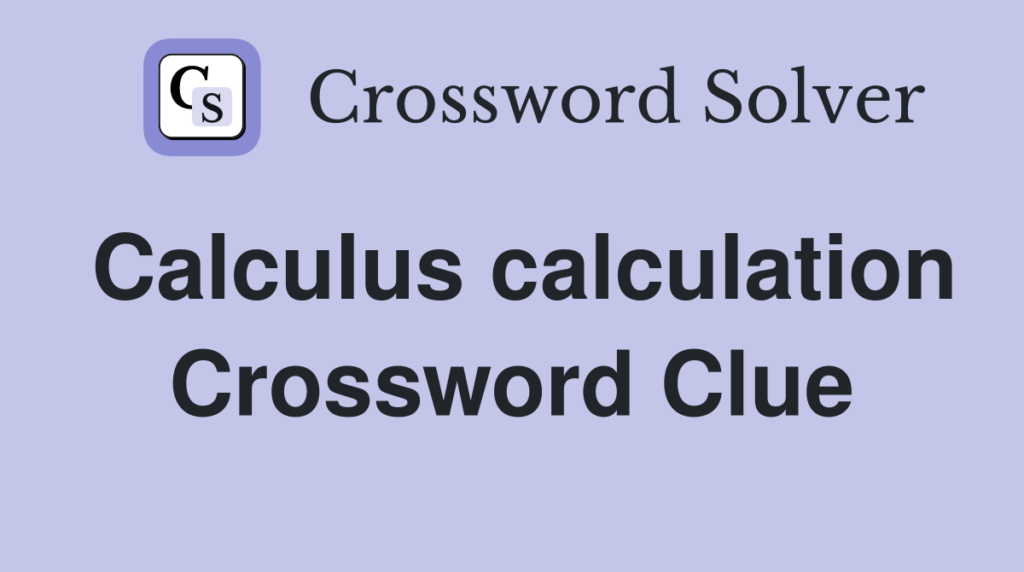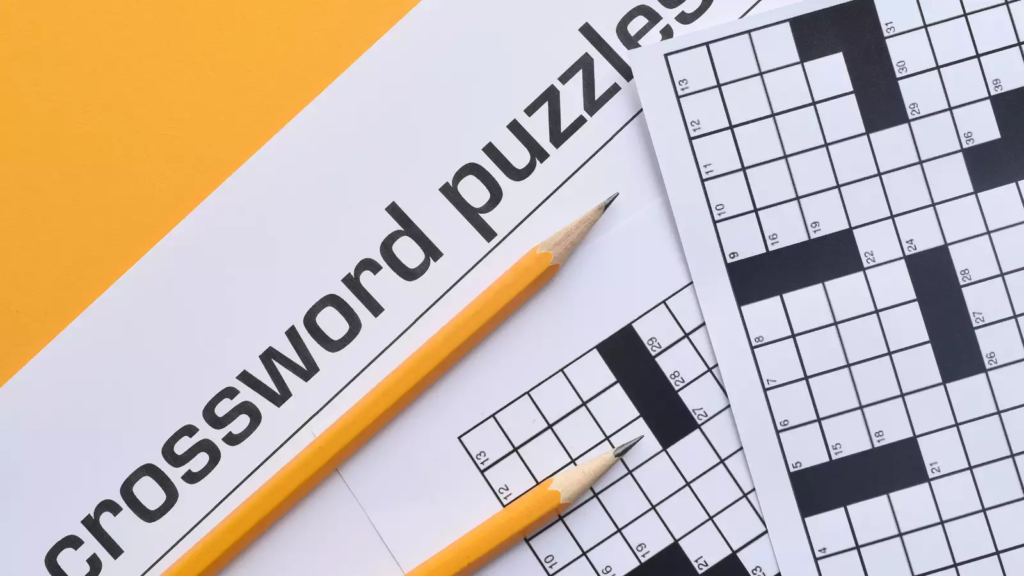
Calculus calculation in NYT crossword puzzles might seem like a tough challenge, but it doesn’t have to be! Whether you’re a math enthusiast or a beginner trying to understand the terms used in these puzzles, we’ve got you covered. In this blog post, we’ll guide you through some simple tips and tricks to help you decode the tricky math-related clues in the New York Times crossword.
If you’ve ever encountered a calculus clue in the crossword and felt stuck, don’t worry—you’re not alone. These puzzles often throw curveballs with technical terms, but once you understand the basic concepts behind calculus calculation in the NYT crossword, solving them becomes much easier. Let’s dive in and break down some of the common calculus references that might pop up in your next puzzle.
ow to Decode Calculus Calculation in NYT Crossword Clues
Calculus calculation in the NYT crossword puzzles might seem confusing at first, but with a little practice, you can easily crack these tricky clues. Crosswords often use math terms to test your knowledge, but don’t worry—you don’t need to be a math expert to solve them. The key is understanding a few basic calculus terms and knowing how to apply them.
When you come across a clue involving calculus in the crossword, the first step is to look for familiar math terms like “derivative,” “integral,” or “limit.” These are commonly used terms in calculus that you might need to fill in. Knowing the basic definitions of these terms will give you a better chance of solving the clue.
If the clue is harder, try breaking it down into smaller parts. For example, if the clue mentions something like “rate of change,” it might be referring to the derivative of a function. Don’t panic if you don’t know the answer right away—sometimes the letters you already have from other clues can help you figure it out.
The Role of Calculus in NYT Crossword Puzzles
In many NYT crossword puzzles, you might find that calculus plays an important role in challenging you to think critically. While the puzzles are meant to be fun, they often test knowledge in a wide range of subjects, including mathematics. Calculus is a branch of math that deals with change and motion, and it’s often used in crosswords to add complexity.
When you see a calculus clue, it may not always be asking for the name of a specific method, but it could be hinting at a concept, like a derivative or an integral. Sometimes, the clues might also reference real-life applications of calculus, such as how calculus is used in physics or economics.
Understanding the basic ideas behind calculus will help you tackle these types of crossword clues. For example, if you know that derivatives measure the rate of change, you’ll be more likely to recognize it in a crossword clue about speed or growth. The more you practice, the easier these clues will become.
Tips for Solving Calculus Calculation NYT Crossword Clues Like a Pro

Solving calculus calculation clues in NYT crossword puzzles takes practice, but there are a few tips you can follow to make the process easier. Here are some helpful tips to guide you along the way:
- Learn Key Terms: Focus on learning basic calculus terms such as “integral,” “limit,” and “derivative.” These words often appear in crossword clues and understanding them will help you solve the puzzles.
- Look for Clue Patterns: Many crossword clues follow specific patterns. For example, if a clue asks about a “rate of change,” it is likely referring to a derivative. Understanding the typical ways these terms are used will make solving much easier.
- Use Crossword Resources: There are many online resources and crossword dictionaries that can help you look up tricky terms. These resources can provide clues and definitions that make solving easier.
- Practice Regularly: The more you practice crossword puzzles, the better you’ll become at spotting math-related clues. Make solving crosswords a regular habit to improve your skills over time.
Breaking Down Calculus Calculation in NYT Crossword: A Beginner’s Guide
For beginners, tackling calculus-related clues in crossword puzzles might feel a bit overwhelming. However, with a little help and practice, you can break down the clues and understand the basic concepts behind them. Here’s how you can approach these clues step by step:
- Start with Simple Clues: If you’re new to crossword puzzles, begin with easier puzzles and try to solve the simpler math-related clues first. This will help you get familiar with the types of questions that show up.
- Familiarize Yourself with Common Calculus Terms: Knowing a few key calculus terms can make a big difference. For example, understand the difference between a derivative and an integral. This way, when these terms appear in the puzzle, you’ll know what they mean.
- Use Context Clues: Sometimes, the clue won’t directly mention calculus but will give hints that point to it. For example, if the clue talks about “change” or “motion,” it could refer to a concept from calculus. Using context can help you fill in the blanks.
- Practice, Practice, Practice: The best way to improve your skills at solving calculus clues is by practicing often. Over time, you’ll begin to recognize patterns and clues faster, making it easier to solve even the toughest puzzles.
How to Tackle Complex Calculus Clues in NYT Crossword

When you face more complex calculus-related clues in the NYT crossword, it’s important to stay calm and focused. These clues may use advanced math terms or require deeper thinking, but you can still solve them with the right approach. Here are some strategies for handling the tough ones:
Common Advanced Terms to Know:
- Derivatives: These measure how something changes. For example, “speed” or “velocity” often refers to derivatives because they describe how position changes over time.
- Integrals: These calculate the total amount of something, like the area under a curve. If a clue mentions total change or accumulation, it could refer to an integral.
- Limits: These are used to describe the behavior of a function as it approaches a certain point. Look for clues about approaching or nearing something to spot this term.
Break Down the Clue:
- Look for Specific Indicators: Words like “change,” “rate,” or “accumulation” can give you clues that lead to the correct answer. For example, if a clue mentions “total amount,” it’s probably talking about an integral.
- Use Word Length as a Guide: The number of spaces in the answer is also important. It will give you clues about whether the answer is a short term like “limit” or a longer term like “derivative.
Conclusion
Calculus calculation in NYT crossword puzzles doesn’t have to be scary! Once you get the hang of some basic terms and ideas, you’ll find that solving these clues becomes much easier and even fun. The more you practice, the better you’ll become at spotting the hints that lead to the answers. So, take your time and don’t be afraid to look up some terms if you’re unsure.
By understanding a few simple calculus concepts, you can unlock more crossword answers and boost your confidence. Remember, solving crosswords is not just about math—it’s about developing problem-solving skills and having fun along the way. Happy puzzling.
FAQs
Q: What is “calculus calculation” in the NYT crossword?
A: “Calculus calculation” refers to math-related clues that use terms or concepts from calculus, like limits, derivatives, or integrals, which appear in the NYT crossword.
Q: How can I improve at solving calculus-related crossword clues?
A: To improve, practice solving crosswords regularly and learn basic calculus terms. Over time, you’ll get more comfortable with the clues.
Q: Do I need to be good at calculus to solve these clues?
A: Not at all! You don’t need to be an expert. Just understanding the basic terms can help you a lot.






